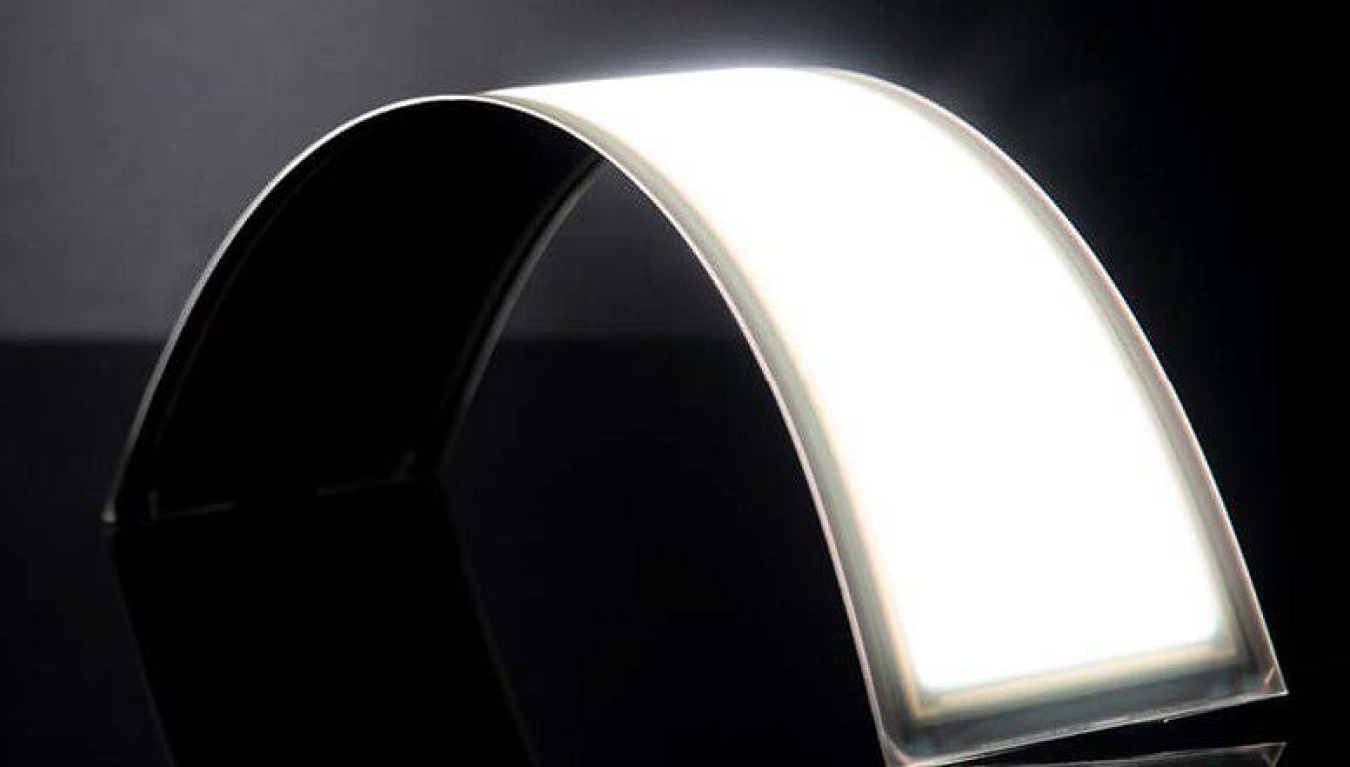OLEDs are organic LEDs, which means that their key building blocks are organic (i.e., carbon-based) materials. Unlike LEDs, which are small-point light sources, OLEDs are made in sheets that are diffuse-area light sources. OLED technology is developing rapidly, and there are a handful of product offerings with efficacy, lifetime, and color quality specs that are comparable to their LED counterparts. However, OLEDs are still some years away from widespread use as a source of general illumination, largely due to their high cost.
Structure of OLEDs
An OLED is a solid-state device consisting of a thin, carbon-based semiconductor layer that emits light when electricity is applied by adjacent electrodes. In order for light to escape from the device, at least one of the electrodes must be transparent. The intensity of the light emitted is controlled by the amount of electric current applied by the electrodes, and the light's color is determined by the type of emissive material used. To create white light, most devices use red, green, and blue emitters that can be arranged in several configurations, as illustrated below.

Advantages of OLEDs
The energy-saving potential of OLEDs is similar to that of LEDs, but the two technologies differ in a number of ways. For one thing, whereas LEDs are concentrated sources of bright light, OLEDs can be configured as larger-area, more diffuse light sources whose soft light can be viewed directly, eliminating the need for shades, diffusers, lenses, louvers, or parabolic shells. The diffuse light from OLEDs allows them to be used very close to the task surface without creating glare for the user, which means that less total light can be used in order to achieve desired illuminance levels. And OLEDs can be made very thin, increasing their eye appeal and allowing for easy attachment to the surfaces of walls and ceilings. This, coupled with the diffuse nature of OLED lighting, could enable an entirely new type of light and light fixture that's both attractive and highly efficient. OLEDs can also be made in almost any shape, can be deposited on flexible substrates, and can be transparent, emitting light from both sides of the device—features that greatly expand the design possibilities, allowing for a completely new lighting experience.

Commercial OLED offerings (left to right: photos courtesy of Visa Lighting, Aerelight, and Acuity Brands Lighting)

Bendable OLED panels with efficacies >60 lm/W are commercially available and exemplify the technology’s flexible design possibilities. (Photo courtesy of OLEDWorks)
Future of OLEDs
OLEDs for general illumination are at a critical stage. OLED "panels" (the light-emitting devices used to construct a luminaire) with efficacies of 85 lm/W and CRI >90 are available. So are panels with high brightness, which allow for smaller devices that achieve the same light output levels. The lifetime of OLED panels is also improving, with many products expecting 30,000–50,000 hours of use before the light output decreases to 70 percent of the initial value. But these advances don't address the major barrier to OLED market adoption, which is cost. The current price of an OLED panel is around $100/klm. DOE's Solid-State Lighting Opportunities document projects that in order for OLED lighting to become commercially viable, panel cost needs to drop to around $10/klm.
- Learn more about advanced lighting R&D challenges and DOE-funded advanced lighting R&D projects.
- Review DOE OLED studies that offer insight on the performance of today’s OLED lighting products and the technology improvements needed for commercial viability.

